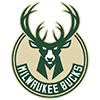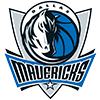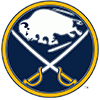Statistics through 6/29/09
Here are two right-handers trying to transition from hot prospect to major leaguer. Bailey has been a fantasy disappointment since his hotly anticipated debut in 2007, with a great arm but poor command. Recently recalled from Triple-A, he has added a splitter and will have another chance at a rotation spot for the Reds. Samardzija was a star wide receiver for Notre Dame before being drafted by the Cubs in 2006. Chicago signed him to a five-year contract in January 2007, and he committed to a career in baseball over football.
Cincinnati selected Bailey (6-3, 210, Born David Dewitt, 5/3/1986) with their first-round pick (seventh overall) in 2004 out of a Texas high school. He won Baseball America's High School Player of the Year award that year, and many envisioned him following Kerry Wood and Josh Beckett to be the next great Texas fireballer. Bailey did his part by striking out 125 at Low-A Dayton in 2005 (8-4, 4.43) and reaching Double-A in 2006, going 10-6, 2.46 with 156 strikeouts between Chattanooga and High-A. Bailey pitched well at Triple-A Louisville in 2007 (6-3, 3.07 in 12 starts) and made his major league debut by beating the Indians on June 8. He struck out Grady Sizemore to begin his big league career. Control problems and a strained groin limited him in the second half, and Bailey wound up the year with a 4-2, 5.76 record for the Reds.
2008 was a year of growing pains for Bailey, as he struggled to gain consistency at Louisville (4-7, 4.77 in 19 starts) and Cincinnati (0-6, 7.93 in eight starts). He has spent nearly all of 2009 at Louisville, going 8-5, 2.71 in 14 starts, with 82 strikeouts and 27 walks in 89 2/3 innings. Bailey was recalled on June 27 and beat the Indians, but walked seven and allowed three runs in five innings.
Homer Bailey: (Lifetime G/F 0.87)
Rating: %Thrown: Fastball 70 55 Curveball 65 5 Slider 60 20 Split-finger 55 15 Changeup 50 5 Control 40 Delivery 50 Composure 45 Bailey's four-seam fastball arrives at 92-95 mph, and he touches 97. When he is in a groove, he fires high fastballs and diving breaking pitches with seeming ease. Bailey can work left-handed hitters effectively inside with his hard stuff, and he has many pitches at his disposal. He carries himself with intensity, and led his Texas high school teams to state titles.
While Bailey's fastball has excellent velocity, scouts have noticed it can lack movement. His difficulty commanding it is the biggest hurdle between him and major league success. As game pressures mount, Bailey can start to aim the ball, and his motion becomes clunky and mechanical. Batters notice this and wait him out for walks. Bailey adds to his difficulties by going for the corners when behind in the count and showing his frustrations too readily when he doesn't get borderline calls.
Bailey's secondary pitches are above-average. His best is a mid-80's slider that is a legitimate strikeout pitch. It dives down and away from right-handers, and he controls it well because he always gets on top of it. Bailey gained permission to use an 86-89 mph split-fingered fastball at Triple-A on the condition that he throw his fastball for strikes. It has good downward movement and it might improve his G/F ratio. Adding a two-seamer or cutter might accomplish this more effectively.
Bailey's big 73-77 mph curveball and 82-86 mph changeup might be casualties of his adding the splitter. In his June 27 start, he threw just a few of each. It would be a shame if he shelved them, because each is effective. The curve has good snap, although he sometimes gets underneath it. It was his best off-speed pitch through his minor league years. His change has similar movement to his splitter. Starting pitchers who throw curves and changes as opposed to splitters seem to have better fastball command. Bailey threw two wild pitches on June 27, both on fastballs.
Bailey's delivery is an old-school rock-and-fire. He loosely drops his arm behind him and brings the ball close to the ground, before showing good arm speed and a three-quarters arm slot. His arm sometimes struggles to catch up to his body, which leaves his fastball up. Bailey doesn't drop-and-drive, as he lands on a stiff front leg. He relies instead on his good height and arm strength. While he stays on a relatively even line to the plate, there are a lot of moving parts to Bailey's delivery. Along with his cautious approach, this helps explain his control problems.
With a career minor league ERA of 3.60 and 525 strikeouts in 519 innings, Bailey has a major league future. Once he trusts his stuff in the strike zone, he will make the transition to the major leagues. The addition of a splitter gives him another weapon, but he needs to improve his control. If he can run the gauntlet of a hitter's ballpark, Dusty Baker, and his own tendency toward high pitch counts, Bailey will be a good #3 starter for 6-8 years.
----------------------
Long before Chicago took Samardzija with a fifth-round pick in 2006, he was one of the most heralded amateur athletes to come out of Indiana. At Notre Dame, he finished with 2,593 yards as a wide receiver, setting the school record. He went 8-2, 4.33 in 15 starts for the Fighting Irish in the spring of 2006, made his professional debut for the Cubs at Rookie ball that summer (1-2, 2.74 in seven starts), then played football that fall for Notre Dame and caught 78 passes, 12 for touchdowns. Samardzija's commitment to baseball in January 2007 came as a surprise. Many expected him to make himself available for the NFL draft to pursue what seemed his primary sport, or to attempt a Bo Jackson-style career at two sports.
Chicago pushed Samardzija in 2007 by sending him to High-A Daytona, where he went 3-8, 4.95 in 24 games (20 starts). He struck out 45 and walked 35 in 107 1/3 innings. Samardzija improved upon being promoted to Double-A Tennessee later that year (3-3, 3.41). He had similar results in 2008, when he had a decent first half at Double-A (3-5, 4.86 in 16 games, 15 starts) before finding his groove at Triple-A (4-1, 3.13 in six starts). Called up to the majors on July 25, he recorded a save in his second appearance and posted a 2.28 ERA in 26 games out of the bullpen.
Despite Samardzija's success as a reliever, the Cubs sent him to Triple-A this spring to continue to work as a starter. In 13 games (12 starts) for Triple-A Iowa, Samardzija currently has a 5-3, 3.72 record. He has 53 strikeouts and 20 walks in 67 2/3 innings. The official line out of Chicago is that they would like him to have a chance to work his way out of a starting role, with a bullpen spot available if he doesn't adapt.
Jeff Samardzija: (2009 Triple-A G/F 0.97)
Rating: %Thrown: Fastball 70 65 Curveball N/A Slider 60 15 Split-finger 60 15 Changeup 45 5 Control 40 Delivery 50 Composure 65 Samardzija brings a 91-93 two-seam fastball and a 93-95 mph four-seamer that has been clocked as high as 98. His two-seamer has good armside run, so much that sometimes he misses his spots by two feet. Samardzija will often bury the two-seamer in the dirt to try for strikeouts or ground balls. He tries to go upstairs for strikeouts with his four-seamer, but batters aren't often tempted by it. Samardzija's fastball command is below-average.
Samardzija has an 83-86 mph split-fingered fastball to keep left-handed hitters off balance, and he will pitch to contact with it. His 82-86 mph slider is another plus pitch, although he has problems throwing this for strikes. The word out of Triple-A Iowa is that pitching coach Mike Mason would like him to develop a curveball to go with his fastball and splitter. Samardzija also throws a below-average 73-78 mph changeup. Working his curve and change into his game would help, as everything he throws now is hard.
Samardzija has a coiled motion in which he brings his arm back late before coming through with excellent arm speed. He does gain full arm extension, but has more of a power-sinker reliever's delivery than a smooth Tim Hudson-type motion. Samardzija seems stiff, and the rap on ex-football players who take the mound has been that they muscle up instead of adapting to baseball's finesse movements. Samardzija leaves himself off-balance upon finishing his delivery, as he kicks his right leg out toward first base. He fields his position well and obviously has great composure, having been tested in huge athletic events at Notre Dame.
Two-sport stars often have a longer development curve than pure baseball players. Samardzija does a good job of pitching to contact when he has his command, but it is a long day for him when he doesn't. He gives up his share of cheap hits, but that is what happens when you don't have control to go along with good stuff. Samardzija is not overpowering, so he needs to do a better job of executing his game plan against the opposition: pitch, rather than just throw. For someone with a reputation as a ground ball pitcher, he has had a low G/F ratio because of his below-average command.
Samardzija and Bailey each have the same issues to address in their games. They have mastered Triple-A but stalled in the majors, where hitters don't bite at their high fastballs or borderline off-speed pitches. They are charged with the task of improving their command and keeping the ball more on the ground while pitching in hitters' parks.
I think Samardzija will be a good set-up man and have two to four good years as a closer. I don't think he has the touch to throw 200 innings. Whether Samardzija's good years as a reliever come after some disappointing ones as a starter is up to the Cubs' brass.
Radar Love will return next week, along with AL West: Brandon Morrow and David Aardsma
Article first appeared 7/3/09
























